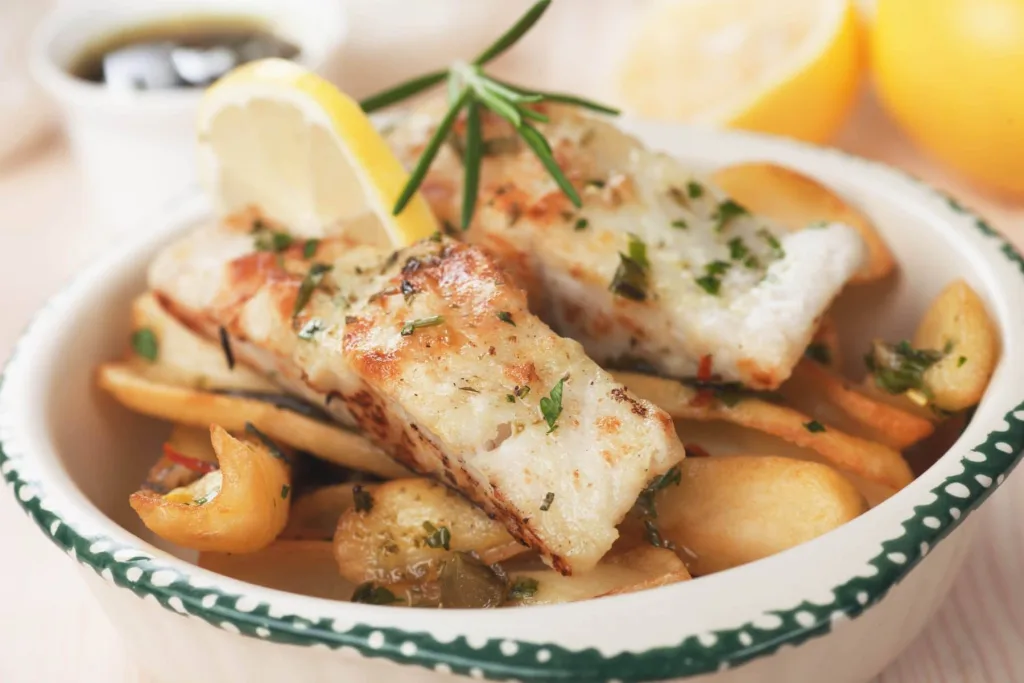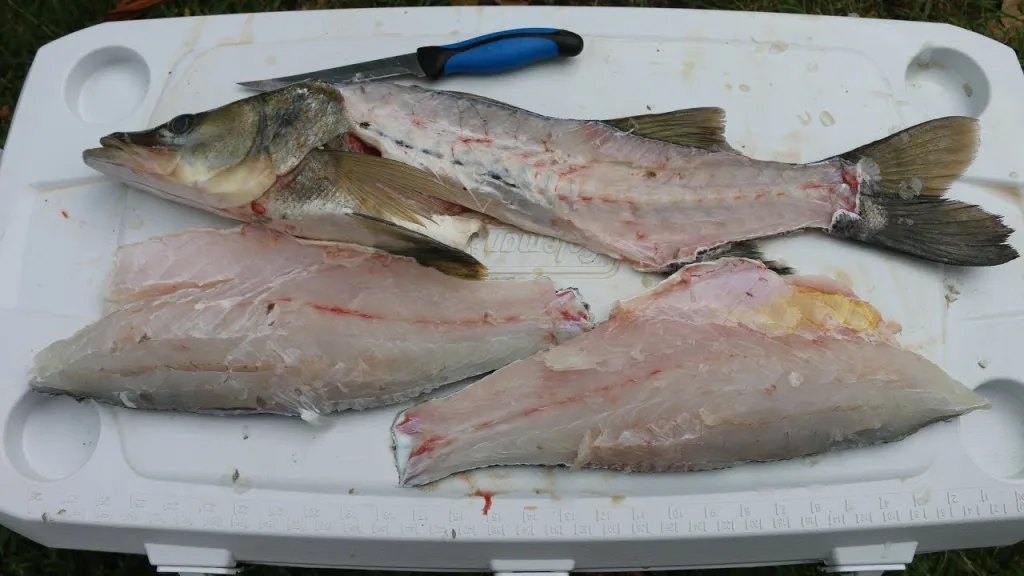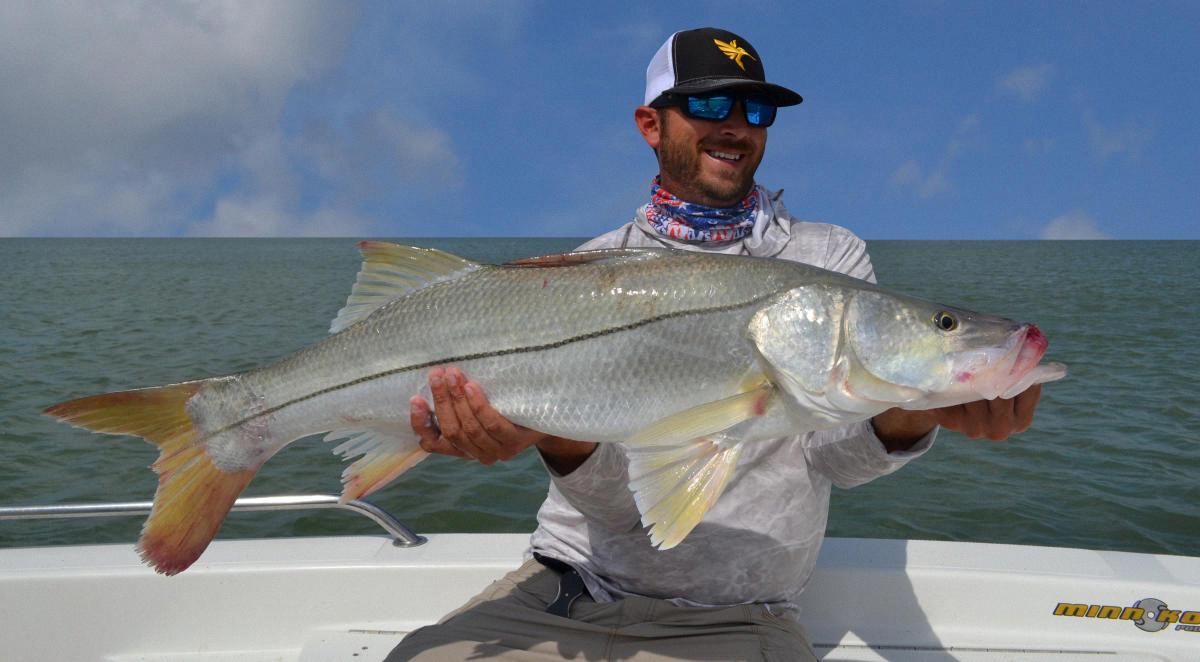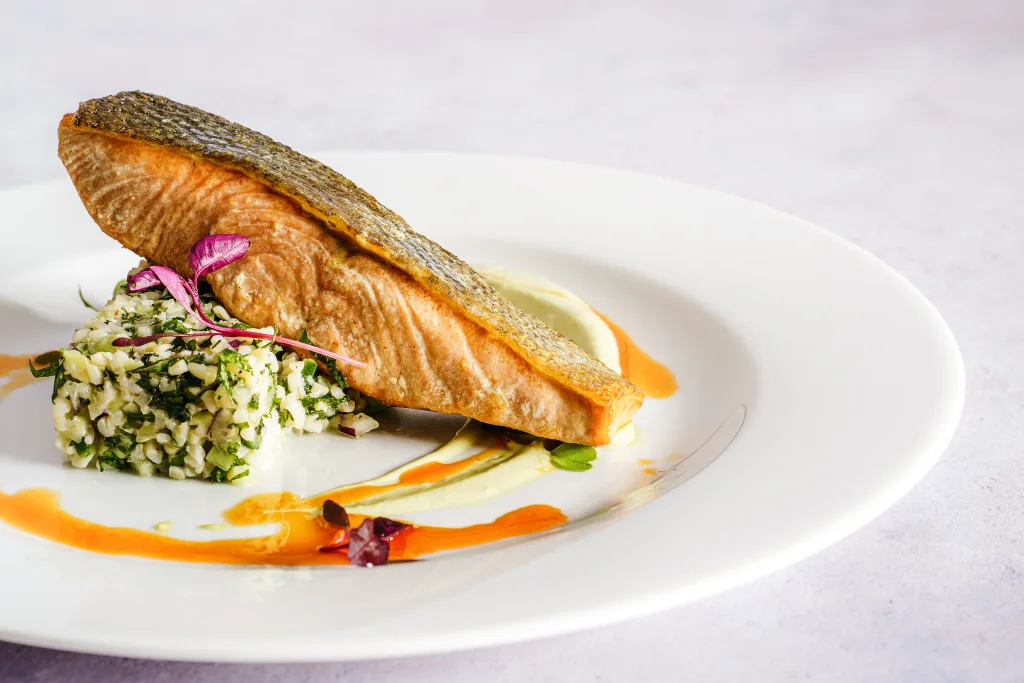If you’ve been fishing for snook, you may be wondering if you can eat them. The answer is yes! Snook are a highly prized game fish with delicious white flesh that make for an excellent meal. Not only are they tasty, but they’re also known to put up a good fight when being caught. However, there are some important things to consider when deciding whether or not you should eat snook.
First off, snook have strict catch limits and closures in place so it’s important to brush up on the regulations before attempting to catch them. Snook have a slot limit of no less than 28 inches and no more than 33 inches total length and a daily bag limit of 1 per person per day, which does not include the captain and crew on a for-hire fishing trip.
Another thing to consider is that snook skin has an intensely soapy flavor which will put you off for life if you take a bite! So it’s important to carefully remove the skin before cooking or eating your catch.
In terms of how to cook snook, there are many dfferent methods that work well such as grilling, baking, broiling or pan-frying in butter or oil. Some chefs recommend marinating the fillets in lime juice for an extra burst of flavor before cooking them. Regardless of how you choose to prepare your snook, just make sure that it’s cooked all the way through before eating it to avoid any potential foodborne illnesses.
Overall, snook can definitely be eaten if done properly and responsibly. They have delicious white flesh that makes them a great addition to any seafood meal so go ahead and enjoy your catch!
Are Snook Fish Edible?
Yes, snook are excellent eating. Their white flesh is mild and flaky, with a unique flavor that is highly prized. The meat is firm and has a delicate texture making it great for grilling, baking, or pan-frying. Because it’s low in fat and oil content, it’s also healthy to eat. Snook can be served whole or filleted and can be used in any number of recipes. It’s no wonder why snook are a highly sought-after game fish by anglers!

The Taste of a Snook Fish
Snook is a mild, white fish which has a delicate, sweet flavor. Its meat is firm and flaky, with a light texture that makes it perfect for grilling, baking, sautéing and poaching. The taste of snook can be likened to that of bass or grouper, though some find its flavor to be slightly more subtle. Its skin can be described as having an intensely soapy flavor, so it’s recommended not to take a bite.
Keeping Snook in Florida
Yes, you can keep snook in Florida as long as you follow the regulations set by the Florida Fish and Wildlife Conservation Commission. Snook must be a minimum of 28 inches and no more than 33 inches total length, and the daily bag limit is 1 per person per day. It is important to note that this daily bag limit does not include the captain and crew on a for-hire fishing trip.
The Best Tasting Fish in Florida
The best tasting fish in Florida is Grouper. This mild, white flesh fish can be found in the nearshore and offshore waters of the state. It is a popular choice because of its versatility as it can be cooked in a variety of different ways including baking, grilling, pan-frying, and steaming. It has a mild flavor that pairs well with herbs, fresh citrus juice, and other seasonings. Other great tasting fish found in the state include Snapper, Mackerel, Dolphin Fish, Snook, Flounder, Mullet and Pompano. All these species have unique flavors you won’t find anywhere else!
The Dangers of Eating Snook
Snook is not commonly eaten because of its strong taste and texture. The skin of the snook has a strong, pungent flavor that many people find unpleasant. Additionally, when cooked whole, the skin’s tough texture can be unappealing. This is why it is generally referred to as a ‘trash fish’ in places like Puerto Rico, where it is not commonly consumed. Although there is an untapped snook fishery in Puerto Rico, it is not widely fished or eaten due to its unfavorable taste and texture.

Do Snook Live Exclusively in Florida?
No, snook do not only live in Florida. They can be found along the Gulf of Mexico from South Carolina to Brazil, including Florida and Texas. Snook prefer to live in habitats with moderate to good water quality and temperatures that usually stay above 60 degrees Fahrenheit.
What Is The Best-Tasting Fish?
The best tasting fish is widely regarded to be Salmon. With its subtly sweet, buttery flavor and firm texture, salmon has become a popular choice among seafood lovers. It also contains high levels of omega-3 fatty acids, which can have numerous health benefits. Additionally, salmon is versatile and can be cooked in a variety of ways such as poaching, grilling, baking, and pan-searing. For those looking for an even more flavorful experience, smoked salmon is an excellent option that packs an extra punch of flavor. No matter how you prepare it, salmon is sure to please the taste buds!
What Is The Best-Tasting Ocean Fish?
The best tasting ocean fish will depend on individual tastes, but some of the most popular and widely enjoyed include salmon, halibut, yellowfin tuna, swordfish, sea bass, flounder, red snapper and wahoo. Salmon has a delicate texture with a mild flavor that is delicious when cooked a variety of ways. Halibut is considered one of the best tasting whitefish and has a mild flavor with firm flakes. Yellowfin tuna has a slightly sweet flavor with a buttery texture that makes it incredibly versatile for any meal. Swordfish is knon for its full-bodied flavor and firm texture that can be grilled or baked to perfection. Sea bass is mild yet flavorful and has a flaky texture that makes it great for steaming or poaching. Flounder is known for its delicate sweetness and tender texture making it perfect for baking or frying. Red snapper is valued for its sweet taste and moist flesh that can be cooked in many ways to bring out its flavor. Finally, wahoo provides an intense flavor with succulent flesh that pairs well with bold flavors like garlic or citrus.
The Potential Danger of Snook
A snook can potentially hurt you, although this is not a common occurrence. If a snook is held by the jaw for an extended period of time, it may try to defend itself by thrashing and flailing, which could result in accidental injury. Additionally, a snook has sharp gill plates and fin spines which could also cause minor injuries if handled improperly or without care. It is important to always handle any fish with caution and respect its natural instinct to protect itself.

Source: sopadre.com
Do I Need a Permit to Fish for Snook in Florida?
Yes, you do need a permit to catch snook in Florida. Unless you are exempt from license requirements, you must have a valid recreational saltwater fishing license and an additional Snook Permit for the take of snook in Florida waters. The Snook Permit is available when purchasing your recreational saltwater fishing license or it can be purchased separately. More information on permit requirements and exemptions can be found on the Florida Fish and Wildlife Conservation Commission (FWC) website.
Do I Need a Snook License in Florida?
Yes, you need a snook license in Florida in addition to a saltwater fishing license. All anglers who take or attempt to take snook must have a valid snook permit. This applies to both shoreline fishing and boat fishing.
Before purchasing a snook permit, make sure to check the current regulations in the area you plan to fish. The specifics of the regulations can vary from county to county and may change over time, so it’s important to stay up-to-date on the local rules and regulations.
You can purchase a snook permit online or at any licensed tackle shop or tax collector’s office in Florida. The cost of the permit varies depending on residency status, age, and length of validity.
It is also important to note that thre is an annual catch limit for snook in some areas of Florida. Anglers are responsible for familiarizing themselves with the applicable state regulations and observing them while fishing for snook.
The Best Bait for Catching Snook
The best baits to catch snook are shrimp, finger mullet, and pinfish. For shallow water fishing scenarios, using a 3 inch or 5 inch white paddle tail with an 1/8 ounce jig head is often effective. For deeper water fishing scenarios, a 1 1/2 ounce flair hawk jig is the best option. Using live bait such as shrimp, finger mullet, or pinfish is also effective for catching snook in any depth of water. It’s important to remember that the size of your bait sould match the size of your target; if you’re targeting small snook, use small baits and if you’re targeting larger snook use larger baits.
Types of Fish that Should Not be Touched in Florida
In Florida, some of the fish you should not touch include the catfish, lionfish, scorpion fish, and stonefish. All of these species are venomous and can cause dangerous stings if touched. The catfish has sharp spines along its dorsal fin that can break off in the skin of anyone foolish enough to grab them. Lionfish have venomous spines located on teir fins that can cause severe pain when touched. Scorpionfish also have venomous spines located on their dorsal and pectoral fins that can cause swelling and intense burning sensations when touched. Lastly, stonefish are armed with needle-like spines located on their back containing a powerful neurotoxin that can be extremely painful if stepped on or touched directly.
What Fish Has the Most Similar Taste to Lobster?
Monkfish is widely considered to be the fish that tastes most like lobster. It has a firm, sweet and delicious flavor similar to that of a lobster tail. Monkfish is a groundfish that swims and feeds along the bottom of the ocean, and its body is made up mostly of its large head which contains most of its mouth. This gives it the nickname “all mouth”, as most of the fish consists of its head. Monkfish is known as “the poor man’s lobster” due to its tasty flavor and low cost compared to lobsters.
The Health Benefits of Eating Fish
The healthiest fish to eat is a subjective choice, as there are many different types of seafood that offer a variety of health benefits. However, some of the most nutritious and sustainable choices include albacore tuna (troll- or pole-caught, from the US or British Columbia), salmon (wild-caught, Alaska), oysters (farmed), sardines (Pacific wild-caught), rainbow trout (farmed) and freshwater coho salmon (farmed in tank systems, from the US).
Albacore tuna is an excellent source of lean protein and omega-3 fatty acids. It also contains essential vitamins and minerals such as B vitamins, selenium, magnesium and potassium. Salmon is packed with omega-3 fatty acids and high amounts of vitamin D. It also contains B vitamins, selenium and potassium. Oysters are loaded with essential nutrients such as zinc, iron, vitamin A and C. They are also a good source of protein. Sardines are low in mercury levels but high in calcium and omega-3 fatty acids. Rainbow trout has high levels of omega-3 fatty acids along with other essential vitamins such as B12 and selenium for healthy bones. Lastly freshwater coho salmon is rich in proteins, omega-3 fatty acids as well as containing vitamin D for a stronger immune system.
In conclusion all thse fish offer great health benefits but it ultimately depends on personal preference when choosing the healthiest fish to eat.

Conclusion
Snook is a highly sought after game fish for its fighting ability and delicious white flesh. While it can be a rewarding catch, anglers need to pay attention to the catch limits and closures in their area. The skin of snook has an intense soapy flavor which can make it unappetizing for some people, although the white flesh is incredibly delicious. Grouper is widely considered the best tasting fish in Florida, but snapper and mackerel are also popular choices. Snook is definitely one of the tastiest fish availale in Florida, and with proper handling it makes a great addition to any meal.
